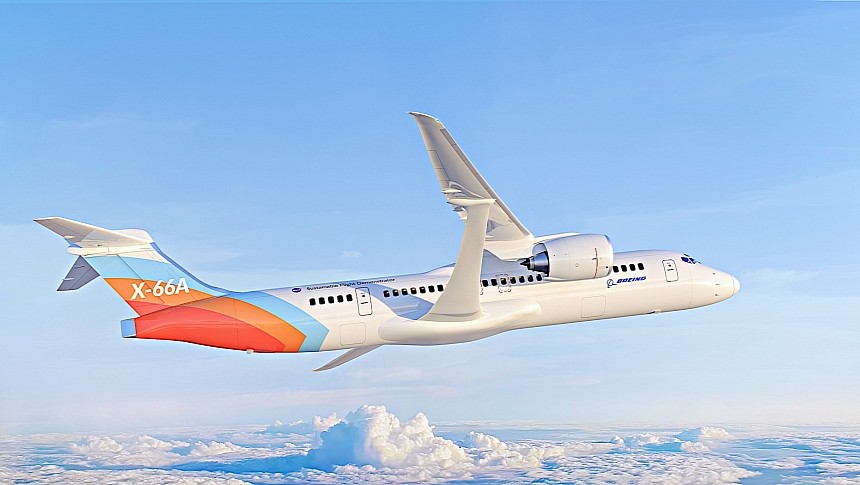The push of the aviation industry to cut down on traditional fuel consumption and the resulting harmful emissions comes in many shapes and sizes. Some are trying new engine designs, others are researching alternative fuels, while a few, like NASA, go bolder and try to envision new aircraft designs.
We've known for a while now the space agency is working on something called the Transonic Truss-Braced Wing (TTBW). The concept is, if you will, an evolution of the standard wing, only longer and thinner, and equipped with diagonal struts that link the main wings to the fuselage.
Going for this approach should allow for the aircraft to generate more lift, thus reducing the amount of fuel the plane needs to become airborne and move through the air. The approach is expected to account for a reduction in fuel consumption by up to 30 percent, when combined with a series of other technologies that are yet to be detailed.
NASA partnered a while ago with Boeing for the project, but so far we only knew of scale tests being conducted on the TTBW wing design alone. This week however we've learned the actual plane to put the idea through its paces will be based on the MD-90.
This family of single-aisle aircraft was introduced in 1995 and is powered by a pair of turbofan engines mounted on the tail. It's probably this particularity that prompted Boeing to choose this model for conversion to NASA's experimental aircraft.
The aerospace company said this week the MD-90 just made the trip from Victorville to the facility in Palmdale where the modifications will be made. The exact date when work on it will begin was not disclosed (Boeing says it'll be "soon”), but we do know when the modified machine will fly for the first time: 2028.
In the reconfigured form the MD-90 will be known as the X-66A. Until earlier this year the project was known as the Sustainable Flight Demonstrator, but as it always happens when an idea moves into the real world, the X designation was slapped on the flying machine by the U.S. Air Force.
NASA has been flying X-planes since the 1940s, a time when it was still called the National Advisory Committee for Aeronautics (NACA). The designations are always awarded by the USAF, starting with the Bell X-1 in 1946 and ending with the X-65 Crane earlier this year. Naturally, now the X-66A is the most recent member of this exotic family of aircraft.
Although the changes in need to be made may seem rather minor, NASA will spend a lot of money on the project. More to the point, it plans to burn some $245 million over the next seven years.
Going for this approach should allow for the aircraft to generate more lift, thus reducing the amount of fuel the plane needs to become airborne and move through the air. The approach is expected to account for a reduction in fuel consumption by up to 30 percent, when combined with a series of other technologies that are yet to be detailed.
NASA partnered a while ago with Boeing for the project, but so far we only knew of scale tests being conducted on the TTBW wing design alone. This week however we've learned the actual plane to put the idea through its paces will be based on the MD-90.
This family of single-aisle aircraft was introduced in 1995 and is powered by a pair of turbofan engines mounted on the tail. It's probably this particularity that prompted Boeing to choose this model for conversion to NASA's experimental aircraft.
The aerospace company said this week the MD-90 just made the trip from Victorville to the facility in Palmdale where the modifications will be made. The exact date when work on it will begin was not disclosed (Boeing says it'll be "soon”), but we do know when the modified machine will fly for the first time: 2028.
In the reconfigured form the MD-90 will be known as the X-66A. Until earlier this year the project was known as the Sustainable Flight Demonstrator, but as it always happens when an idea moves into the real world, the X designation was slapped on the flying machine by the U.S. Air Force.
NASA has been flying X-planes since the 1940s, a time when it was still called the National Advisory Committee for Aeronautics (NACA). The designations are always awarded by the USAF, starting with the Bell X-1 in 1946 and ending with the X-65 Crane earlier this year. Naturally, now the X-66A is the most recent member of this exotic family of aircraft.
Although the changes in need to be made may seem rather minor, NASA will spend a lot of money on the project. More to the point, it plans to burn some $245 million over the next seven years.










